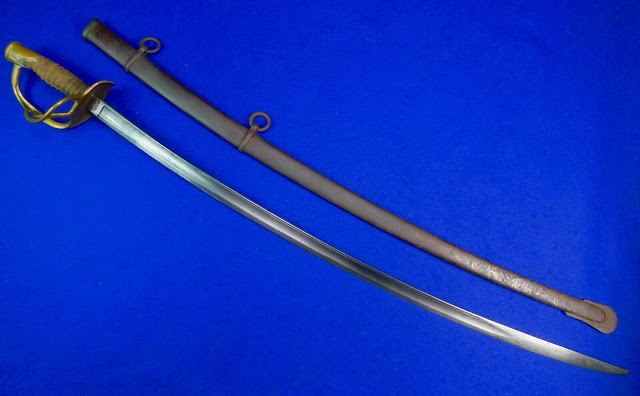Cutting Our Way Out at Lovejoy Station
With the Atlanta campaign well
into its fourth month and his patience well-nigh exhausted, General William T.
Sherman dispatched General Judson Kilpatrick’s cavalry division south from its
camps at Sandtown with one simple mission: break the Macon & Western
Railroad that kept Atlanta armed and provisioned. Previous cavalry raids had failed to
accomplish this objective, and Sherman thought that under the command
of a hard-riding commander like Kilpatrick, perhaps the deed could be
done.
But by the evening of August 20th, General Kilpatrick's bold raid was on the cusp of turning into a first-rate debacle. His command had struck the railroad at Jonesboro and worked their way south while tearing up the track but ran into serious difficulties at Lovejoy Station. Surrounded on all sides by veteran Rebel infantry and troopers, Kilpatrick’s division was trapped. Kilpatrick opted to use blunt force, forming his expedition into a solid column, and aiming to bull his way through the Confederates. In the vanguard, Kilpatrick chose Colonel Eli Long’s hard riding cavalry brigade of the 1st, 3rd, and 4th Ohio Cavalry regiments.
In 1891, Garner Stimson, a former captain of the 3rd Ohio Cavalry, penned the following article describing that hell-bent-for-leather cavalry charge for the Western Veteran newspaper. Stimson’s account captures the desperation of Kilpatrick’s command as it escaped from the Confederate trap at Lovejoy Station.
I was orderly
sergeant of Co. B, 3rd Ohio Cavalry and was in command of the
company in the absence of the captain who was sick. When General Kilpatrick
found that we were surrounded, he sent his aide around to tell us that we were
surrounded and must cut our way out and save ourselves as best we could.
The brigade
was hastily formed, Colonel Eli Long leading, and I followed as we had no time
for consultation that Co. B might take its proper place. We were ordered to
charge in column of fours on their artillery which was in position and
supported by cavalry. As we neared the cannon, the enemy broke and ran except
one officer who foolishly refused to surrender and was cut down. After passing
the cannon, the command broke, the one idea of each man being to save himself.
While running
after the Johnnies, most of whom were dismounted and unarmed, they would call
out “I surrender, don’t shoot me!” I had just emerged from a wood and struck
the road with two of my command when Colonel Robert Minty, commander of the
First Brigade, came up with two his aides and said to me, “Orderly, where do
you belong?”
I replied, “Second Brigade,
Second Division.”
He asked, “Where is the rest of
your command?”
“This is all I know anything
about.”
He smiled and said, “This is all
of the First Brigade that I know anything about.”
As the men emerged from the
woods, we reformed and I was placed in command of Companies B and D and ordered
to hold the ridge until the command moved out of sight. We took our position
behind a couple of log houses and some apple trees and held it until the enemy
drove us away. The rest of the command led our horses away. While running, we
fired to the rear making all the noise we could. The regiment, hearing the
racket, formed their line in a cleared field.
As we ran, we came to what
appeared to be a small stream but, owing to the recent rain, it had greatly
swollen. Thinking it was shallow, we stepped in and down we went headfirst, but
managed to get across. We spied our horses at a distance but did not stop to
pull off our boots to empty the water out but held up our feet so that it would
run out and then hastened to our horses and mounted.
The Rebs came to the edge of the
woods and gave battle and our regiment lost more men here than at any other
time during our four years’ service. Our brigade command Colonel Long was
wounded three times.
After the battle, we marched
until 3 o’clock in the morning when we stopped to feed. A fearful storm raged
all night. At daybreak, we crossed a stream swollen and running so rapidly that
we could not go straight across but would start in above the ford in order to
come out at the proper landing. It was reported that there were several horses
carried down this stream and lost. When we came to the landing there we found
General Kilpatrick standing waist-deep in the water taking horses by the bridle
and leading them out.
Moving on, we came to a grist mill with a mountain opposite. As the head of the column neared it a fire broke out in the mill supposed to have been kindled by the enemy to prevent our going through. It was pretty hot passing it, but our clothes needed drying as they had been wet for 24 hours, but we hurried by and in a few days reached our old camping ground at Buckhead.
To read another perspective of the fight at Lovejoy Station from another soldier of the 3rd Ohio Cavalry, please check out the following post:
“A Hard Charge at 112 Degrees: Lovejoy Station.”
Also, check out “With the 10th Ohio Cavalry on the Atlanta Campaign: William Wallace Hill.”
“Kilpatrick’s Raid,” Orderly Sergeant Garner Stimson, Co. B,
3rd Ohio Volunteer Cavalry, Western Veteran (Kansas), January
13, 1892, pg. 5












Comments
Post a Comment